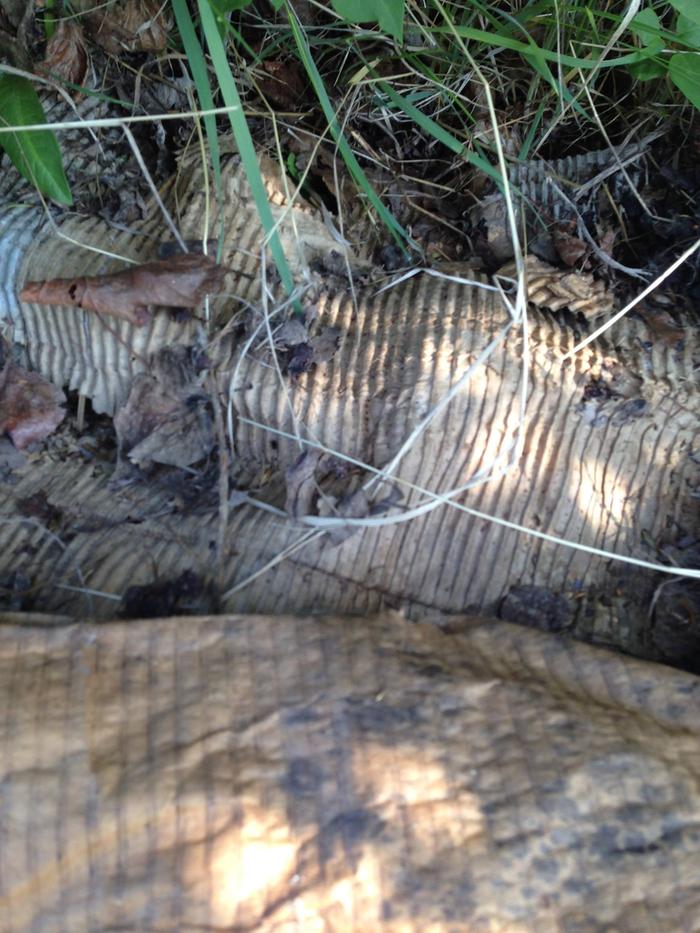








We live in Nashville, Tennessee, USA
www.permavations.com
 1
1




Call me George.









 1
1




Sunny Soleil - Feed The Future - Wellness v pharma, free energy v oil, own grown v processed food, community v nuclear, natural building v concrete, energy interaction v money, consciousness v asleep
 2
2




Living Wind wrote:Never ever ever ever had a problem with card stock/board as base layer... I've done a couple hundred sheet mulched beds now. Never an issue. But sure, use common sense..Rip tape/adhesive off.
Peace -
Sunny Soleil - Feed The Future - Wellness v pharma, free energy v oil, own grown v processed food, community v nuclear, natural building v concrete, energy interaction v money, consciousness v asleep
 3
3




Certifiable food forest gardener, free gardening advice offered and accepted. Permaculture is the intersection of environmentalsim and agriculture.




Nick Garbarino wrote: A healthy microheard can remediate just about anything, other than heavy metals, so unless cardboard and newspaper are loaded with too much heavy metal, I just don't see any issue. In my humble opinion.
Sunny Soleil - Feed The Future - Wellness v pharma, free energy v oil, own grown v processed food, community v nuclear, natural building v concrete, energy interaction v money, consciousness v asleep
 2
2




Certifiable food forest gardener, free gardening advice offered and accepted. Permaculture is the intersection of environmentalsim and agriculture.
 1
1




Muddling towards a more permanent agriculture. Not after a guru or a religion, just a functional garden.




Certifiable food forest gardener, free gardening advice offered and accepted. Permaculture is the intersection of environmentalsim and agriculture.




I live in Bizzaro World.
 4
4




paul wheaton wrote:This would be a good time to point out that one could create cardboard using 100% mechanical means, plus using organic corn starch for the glue. So, I suppose there could be something called "organic cardboard". Further, as Paul Stamets points out, the seeds of edible plants could be worked into the cardboard. So when you get a package, you can bust open the cardboard and then toss it out on your lawn. A few months/years later you can have all sorts of fun stuff growing there!
 1
1













Recycle The Rubbish For a brighter tomorrow
 1
1




 1
1





 6
6





Now I understand why Paul Wheaton hates using cardboard on the garden. It is often laced with fermaldehyde if it comes from China ( usually more flimsy or says made in China) this pile was pulled out of my sister's garden after three years used for mulching under straw and wood chips. Not one wormhole nor any fungi at all grew on it. She too hates cardboard in the garden. I was awestruck by the total in-biodegrability of it

Chinese formaldehyde-laced cardboard. three years in the garden, no signs of wear.
QuickBooks set up and Bookkeeping for Small Businesses and Farms - jocelyncampbell.com
 4
4




It's never too late to start! I retired to homestead on the slopes of Mauna Loa, an active volcano. I relate snippets of my endeavor on my blog : www.kaufarmer.blogspot.com
 5
5




 5
5




Nick Kitchener wrote:The risk of formaldehyde contamination from cardboard in sheet mulching has been well and truly discussed. What I have not seen anywhere is a discussion about using this same cardboard as a growing medium for mushrooms.
We know that mycelium are very good at absorbing toxins, and corrugated cardboard is a widely used growing medium for cultivating oyster mushrooms and other culinary strains.
 1
1




Medicinal herbs, kitchen herbs, perennial edibles and berries: https://mountainherbs.net/ grown in the Blue Mountains, Australia
 3
3




Formaldehyde is not expected to adsorb to soil particles to a great degree and would be considered mobile in the soil, based on its estimated Koc. According to Kenaga (1980), compounds with a Koc of <100 are considered to be moderately mobile. Formaldehyde can be transported to surface water through runoff and to groundwater as a result of leaching. Parameters other than Koc affecting its leaching to groundwater include the soil type, the amount and frequency of rainfall, the depth of the groundwater and the extent of degradatio n o f formaldehyde. Formaldehyde is susceptible to degradation by various soil microorganisms (U.S. EPA, 1985). Howard et al. (1991) estimated a soil half-life of 24-168 hours, based on estimated aqueous aerobic biodegradation half-lives.
 1
1




the chemical 4-methylbenzophenone, this component of printing ink had slipped from the outside of the cardboard box and into the cereal. That is, until the European Food Safety Authority (EFSA) was asked to look into the matter.
Examine your lifestyle, multiply it by 7.7 billion other ego-monkeys with similar desires and query whether that global impact is conscionable.
 2
2




Study of cardboard colorants and heavy metals
 6
6




 1
1




 and black and white newspaper is fine. Color in newspaper is bad news. The black and white has soy. Possibly the color cardboard is not great for the same reason. They use chemicals to produce the color.
and black and white newspaper is fine. Color in newspaper is bad news. The black and white has soy. Possibly the color cardboard is not great for the same reason. They use chemicals to produce the color.Bless your Family,
Mike
 1
1




 2
2




paul wheaton wrote:
Another problem is that newspaper/cardboard tends to not break down particularly fast. And since the mission is usually to smother something that is already there, it is placed in sheets. If too thick, it could make a layer that cannot be penetrated by water or air - maybe for many years.
paul wheaton wrote: Last spring I visited somebody's garden where an apple tree was doing poorly. After digging around a little, a layer of newspaper was found about an inch under the soil. It was about a quarter of an inch thick and had apparently been put down to kill weeds about five years earlier. It killed the weeds. And it was making the tree sick. And it wasn't breaking down.
My philosophy book "Serenity of Simplicity": https://www.amazon.com/Serenity-Simplicity-Ideas-Liberty-Reason/dp/1070961221/ref=sr_1_1?keywords=luke+furgason&qid=1569634323&sr=8-1




Leah Sattler wrote:I prefer hay for alot of reasons. for me most of it is just practical.

 2
2




The holy trinity of wholesomeness: Fred Rogers - be kind to others; Steve Irwin - be kind to animals; Bob Ross - be kind to yourself
 3
3




Kabir424 Hatfield wrote:I live in Alabama and I have used cardboard on a couple of different occasions to kill off grass and add carbon to the soil. I usually just lay out cardboard from boxes with all of the metal and plastic off and then top that with leaves, compost, grass clippings, etc. This has happened on 2 separate occasions when I start this in the early fall and then by early spring I can dig these areas up to mix in the organic matter. The cardboard is still recognizable as cardboard but it is easy to rip to pieces and include into the soil. One year later I haven't found any pieces of cardboard in the soil because it has all broken down. I don't know if this is because I live in Alabama and we have such a long time period for things to break down or if its because I have overly active soil buddies or if it is something else. But, I haven't really had a problem with 1 layer of cardboard breaking down within a year and a half. This doesn't address any issues of toxicity leaching from the cardboard if there are any.
 4
4




"Si hortum in bibliotheca habes, nihil deerit." [If you have a garden and a library, you have everything you need] Marcus Tullius Cicero in Ad Familiares IX, 4, to Varro.
 2
2




Community Building 2.0: ask me about drL, the rotational-mob-grazing format for human interactions.

|
When evil is afoot and you don't have any arms you gotta be hip and do the legwork, but always kick some ... tiny ad:
2024 Permaculture Adventure Bundle (now a special for october 2025)
https://permies.com/w/bundle
|



